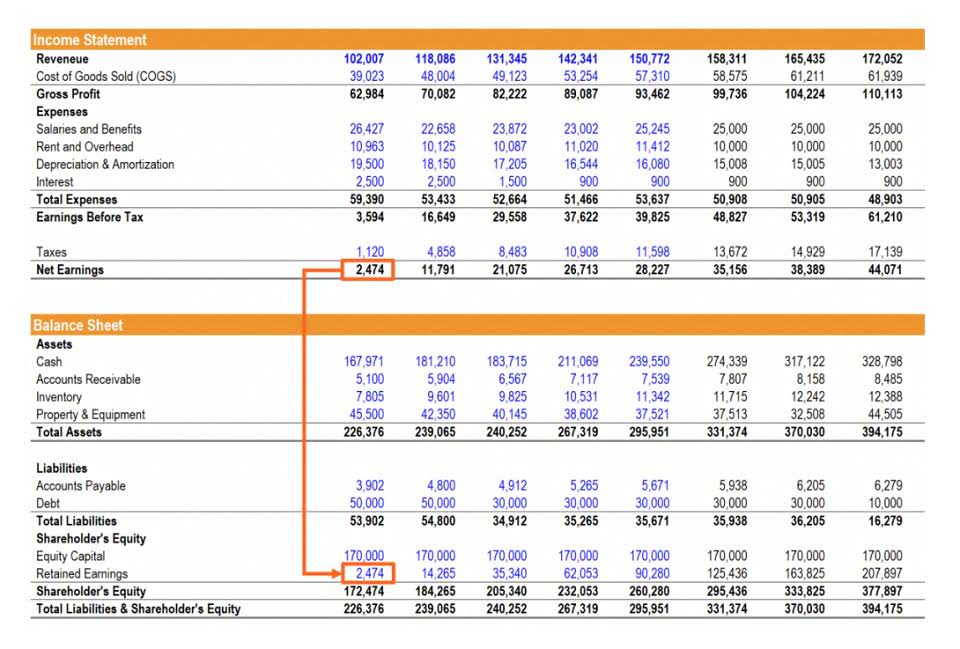
When a company loses money or pays dividends, it also loses its retained earnings. This is the company’s reserve money that management can reinvest into the business. Retained earnings refer to a company’s net earnings after they pay dividends.
Retained Earnings Formula and Calculation

Since price-to-earnings (P/E) ratios cannot be used to value unprofitable companies, alternative methods have to be used. These methods can be direct—such as discounted cash flow (DCF) or relative valuation. Let MYOB improve your accounting operations, ensure compliance, and give you financial peace of mind while helping your business succeed. MYOB lets you automate tedious daily tasks, provides insight into your business’s financial health, keeps you compliant with New Zealand tax regulations, and ultimately helps you ditch the spreadsheets. You can even add your logo and branding to customisable invoice templates.
Are Retained Earnings an Asset or Equity?

This profit is often paid out to shareholders, but it can also be reinvested back into the company for growth purposes. Retained earnings refer to the historical profits earned by a company, minus any dividends it paid in the past. To get a better understanding of what retained earnings can tell you, the following options broadly cover all possible uses that a company can make of its surplus money.
Smart growth is smart business
This is because due to the increase in the number of shares, dilution of the shareholding takes place, which reduces the book value per share. And this reduction in book value per share reduces the market price of the share accordingly. Cash dividends result in an outflow of cash and are paid on a per-share basis. Retained earnings refer to the residual net income or profit after tax which is not distributed as dividends to the shareholders but is reinvested in the business. Typically, the net profit earned by your business entity is either distributed as dividends to shareholders or is retained in the business for its growth and expansion.
Capitalization Table (Cap Table)

We’ll explain everything you need to know about retained earnings, including how to create retained earnings statements quickly and easily with accounting software. In other words, negative shareholders’ equity should tell an investor to dig deeper and explore the reasons for the negative balance. You can find this number by subtracting your company’s total expenses from its total revenue for the period.
Retained Earnings: Calculation, Formula & Examples

The retention ratio helps investors determine how much money a company is keeping to reinvest in the company’s operation. If a company pays all of its retained earnings out as dividends or does not reinvest back into the business, earnings growth might suffer. Also, a company that is not using its retained earnings effectively has an increased likelihood of taking on additional debt or issuing new equity shares to finance growth.
Gross Profit: What Is It and What It Means For Your Business
- If the stock appears overvalued and there is a high degree of uncertainty about its business prospects, it may be a highly risky investment.
- Retained earnings are reported under the shareholder equity section of the balance sheet while the statement of retained earnings outlines the changes in RE during the period.
- Yes, retained earnings carry over to the next year if they have not been used up by the company from paying down debt or investing back in the company.
- Retained earnings are essentially the cumulative profits a company has earned over its history that have not been distributed as dividends.
- Revenue sits at the top of the income statement and is often referred to as the top-line number when describing a company’s financial performance.
Retained earnings are not the taxed portion because tax has already been deducted from this total. Now, add the net profit or subtract the net loss incurred during the current period, that is, 2019. Since company A made a net profit of $30,000, therefore, we will add $30,000 to $100,000. This is to say that the total market value what are negative retained earnings of the company should not change. The retained earnings amount can also be used for share repurchase to improve the value of your company stock. In this article, you will learn about retained earnings, the retained earnings formula and calculation, how retained earnings can be used, and the limitations of retained earnings.
- It can also be an essential factor in a company’s creditworthiness, demonstrating its ability to generate profits and set them aside for future use.
- They are a measure of a company’s financial health and they can promote stability and growth.
- For instance, if you prepare a yearly balance sheet, the current year’s opening balance of retained earnings would be the previous year’s closing balance of the retained earnings account.
- If a company receives a net income of $40,000, the retained earnings for that month will also grow by $40,000.
- You might go this route for various reasons, such as increasing existing shareholders’ ownership stake or reducing the number of outstanding shares.
- Retained earnings represent the profits a business generates over time, while cash flow measures the net amount of cash/cash equivalents coming and and out over a given period of time.
However, you need to transfer the amount from the retained earnings part of the balance sheet to the paid-in capital. Now, how much amount is transferred to the paid-in capital depends upon whether the company has issued a small or a large stock dividend. As stated earlier, retained earnings at the beginning of the period are actually the previous year’s retained earnings. This can be found in the balance of the previous year, under the shareholder’s equity section on the liability side. Since in our example, December 2019 is the current year for which retained earnings need to be calculated, December 2018 would be the previous year.
Balance Sheet Assumptions
Upon combining the three line items, we arrive at the end-of-period balance – for instance, Year 0’s ending balance is $240m. By submitting this form, you consent to receive email from Wall Street Prep and agree to our terms of use and privacy policy. This can change how the account should be interpreted by investors and should be analyzed carefully. Similarly, the iPhone maker, whose fiscal year ends in September, had $70.4 billion in retained earnings as of September 2018. A term sheet is a non-binding legal document that outlines the basic terms and conditions of an investment transaction between two parties – typically between an investor and a startup seeking funding.
Retained earnings are the portion of a company’s cumulative profit that is held or retained and saved for future use. Retained earnings could be used for funding an expansion or paying dividends to shareholders at a later date. Retained earnings are related to net (as opposed to gross) income because they are the net income amount saved by a company over time.
